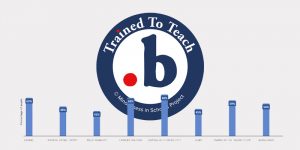How can I demonstrate the impact of teaching mindfulness in my school?
MiSP provides several ways in which you can gather, assess and demonstrate the impact of our curricula:
 Online Impact Assessment Tool
Online Impact Assessment Tool
MiSP uses a ‘Class Impact’ survey service to measure the impact of .b, Paws b and .breathe for pupils and teachers in the classroom. Teachers and pupils in schools nationwide complete online questionnaires within one month of the last lesson of the course. They report on how much they enjoyed the course and how useful they had found it as well as indicating specific areas of impact such as coping with difficulty, concentration, exams, sleep and noticing more of the ‘good stuff’ in life.
MiSP Summary Reports
Since September 2016 pupils have given their feedback on our curricula, and teachers have told us what it is like to teach Paws b, .b and .breathe!
Read and download summary PDF reports to share with all SLT, governors, parents, staff and pupils themselves.
The reports give a real insight into how the curricula lands with pupils and which elements they have found particularly helpful, and are likely to continue to use.
Individual Class Impact Presentations
We can set up a Class Impact survey for your class (or for a group of classes) via our Hub.
We will collate the data for you and send you a tailored report that you can share with other stakeholders in your school. Teachers that have used this service have rated it as an extremely useful way to monitor their teaching and demonstrate outcomes to senior leadership teams, parents and the pupils themselves:
“It’s great to have this survey…for many reasons! I can feed it back to management for one thing …it also shows me that you can never second guess what is really going on for these .b students … they are full of surprises! And it is great to involve them in evaluating their learning.”
“Will be really helpful in guiding the development of mindfulness in our school. I will be meeting with SMT and using this as a tool to justify funding and timetable allocation.”
Hard-copy Feedback Questionnaire
If getting your pupils to complete an online survey is not feasible for you, you can still collate their feedback following .breathe, Paws b or .b by using the Feedback Questionnaire. You can download this from the Hub (under Extra Resources) and print off copies for your pupils to complete before collating the data yourself.
Keeping a Teacher’s Diary
A good way of collating evidence of qualitative impact yourself is to keep a written record of impact as you go along. This may include:
- Comments you hear from students or staff
- Changes in behaviour you witness, in terms of learning, relationships in school and responses to specific situations
- Observations of the impact of the lessons on students who you may be on your radar for other reasons
- A record of the affect of teaching mindfulness on your own day, and on your relationships with the students, with your colleagues, on your approach to your work (and any challenges) and on your own wellbeing
Whilst this is a somewhat subjective record, it will nonetheless provide examples and cases for discussion with SLT or other colleagues, and capture otherwise anecdotal evidence in a formal document.
Case Studies
Our website also features a growing number of case studies from schools who have introduced mindfulness. Teachers from a variety of schools share their experiences from both a personal and professional perspective, and can provide advice and inspiration for others trying to introduce or embed mindful in their schools.
Share their journeys with your school community.
We also welcome new case studies and if you are able to provide us with one we will aim to publish it. Please email: enquiries@mindfulnessinschools.org
Other Metrics of Impact
We know that some schools use other metrics to measure the impact of mindfulness in their school. Some conclude that introducing mindfulness to staff may have led to fewer days of staff absence, or higher rates of staff satisfaction and wellbeing. For others, that teaching mindfulness to children has led to fewer playground incidents, or fewer referrals to pastoral care. Those who are budget conscious also may point to financial savings in terms of additional staff support needed in the playground, or reductions in administration time required to organise supply teachers to cover staff absence, or a boost to financial income as more students stay on roll or are attracted to the school.
We are very cautious about using these metrics of impact as ‘proof’ that mindfulness ‘works’, as there are many factors at play and identifying cause and effect is not always straightforward. Researchers would say that it is very difficult to prove that it is mindfulness alone which can explain these outcomes.
Our view is that mindfulness supports a school culture where individuals can connect with themselves, with each other and with what they are doing so that they can flourish. This then will positively impact all of these sorts of measures, and more.
<< Read Top Tip: Getting students to have a go Read Top Tip: Disruptive Pupils >>